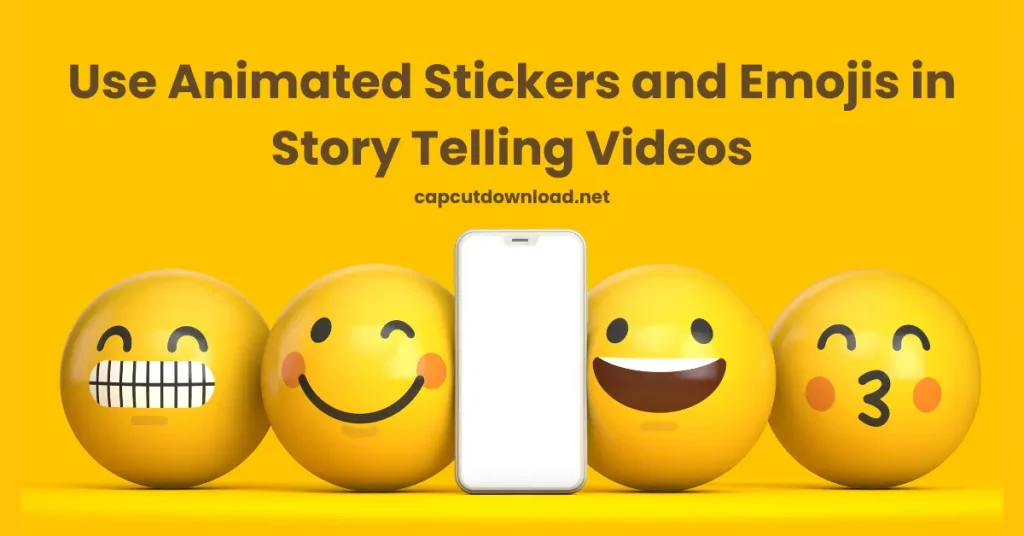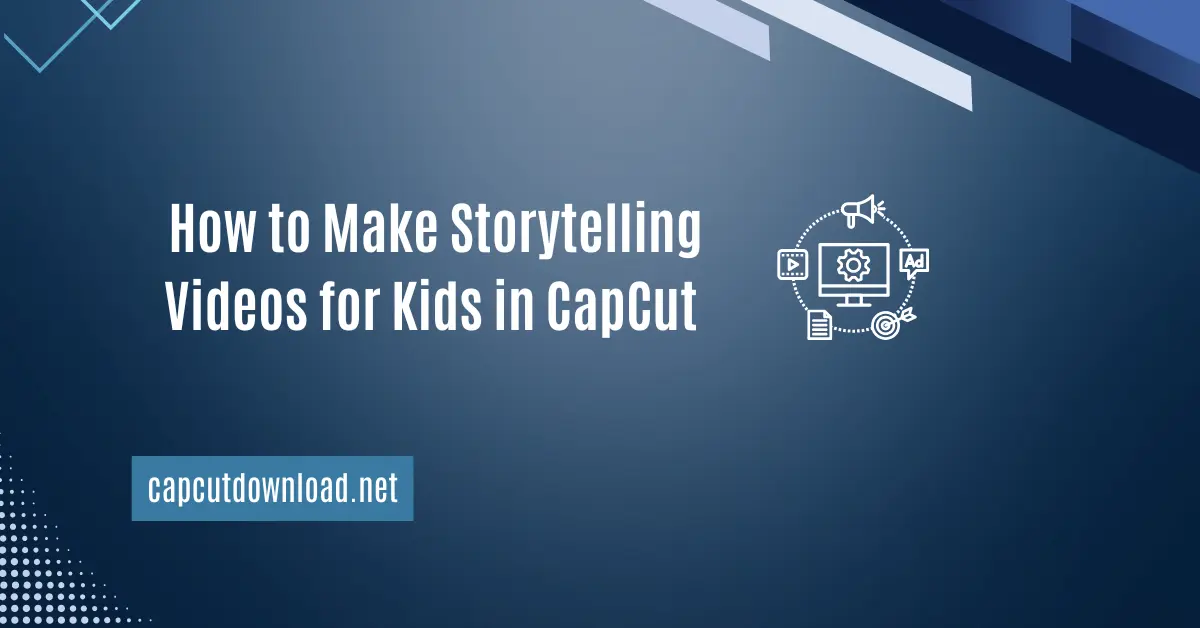How to Make Storytelling Videos for Kids in CapCut?
If you’ve ever tried keeping a child’s attention for more than a few minutes, you know it’s no walk in the park. But storytelling? Now that’s magic. Mix a fun story with colorful visuals, music, and sound effects, and you’ve got their full attention. CapCut isn’t just for trendy edits—it’s also an amazing tool for crafting creative, fun, and super-engaging storytelling videos for kids. So, whether you’re a parent, teacher, or content creator, here’s a step-by-step guide to help you bring those bedtime tales to life, CapCut-style. Enjoy professional-grade video editing by getting the CapCut download with premium features for an enhanced experience. Take your video edits to the next level with premium effects.
Why Use CapCut for Kids’ Storytelling Videos?
Because kids don’t do boring, and CapCut makes “boring” impossible.
You get:
- Animated stickers
- Voice effects
- Text-to-speech features
- Easy drag-and-drop editing
- A massive library of sounds and music
It’s a one-stop shop to turn a simple story into a mini-movie. No expensive software, no technical headache.
Pick Your Story
Start with a simple, fun, and age-appropriate story. You can:
- Write your own
- Adapt a classic fairy tale
- Use short moral stories
- Turn a poem or nursery rhyme into a visual piece
Make sure the story has a beginning, middle, and end. Add a funny twist if you want bonus points with the kids!
Record the Narration
It is where the magic begins. Record yourself reading the story aloud. You can use CapCut’s voice recording feature or record it separately and import the audio.
Tips:
- Use character voices
- Change your tone with the story
- Keep it slow and clear for younger kids
Or go the fun route and use CapCut’s Text-to-Speech with different voice effects (like a robot, squirrel, or baby voice). Kids love that.
Create the Visuals
Now, it’s time to build the world of your story!
Options for visuals:
- Hand-drawn illustrations (scan and import)
- Stock images or animated assets from websites like Pixabay or Pexels
- CapCut’s built-in stickers and emojis
- Canva-made storyboards (just export and drop into CapCut)
Pro tip: Use a different image or scene for each line of the story to keep things fresh.
Open CapCut and Start Editing
Launch CapCut, start a new project, and import your audio and visuals. Drag your images or clips into the timeline and align them with the narration.
Want a picture to zoom in as you describe a character? Add a keyframe and scale it up slowly. Want a castle to appear magically? Use a fade-in animation.
It is where CapCut shines. It’s all visual, all intuitive.
Add Sound Effects and Music
Want footsteps as the character walks? Or a swoosh when a fairy appears? CapCut’s sound library has all kinds of goodies.
- Search for effects like birds chirping, water splashing, or doors creaking.
- Add light background music—soft instrumentals or whimsical tunes work great.
- Adjust the volume so it doesn’t overpower the narration.
The sound makes the video pop and helps bring the story to life.

Use Animated Stickers and Emojis in Storytelling Videos
CapCut has a treasure chest of animated stickers—animals, stars, clouds, hearts, and even dancing food. Stickers are perfect for kids’ videos.
For example:
- Add stars when the fairy waves her wand
- Use animated animals for character reactions
- Put speech bubbles with fun expressions like “Yay!” or “Wow!”
These little touches keep kids glued to the screen.
Insert Text with Fun Fonts
Kids are visual learners, so add key lines or phrases from your story in bold, fun fonts.
- Use big, colorful text for the story title
- Highlight important dialogue or onomatopoeias like “BOOM!” or “WHOOSH!”
- Try animated text effects for added flair
CapCut lets you animate your text easily with effects like typewriter, bounce, or pop-up.
Wrap It Up with a Message or Question
Kids love interaction. Add a sweet little outro:
- “Did you like the story?”
- “What do you think happened next?”
- “Should we tell another story tomorrow?”
You can also use this space to sneak in a lesson or moral, especially if the story has one.
Export and Share
Once your storytelling masterpiece is ready:
- Export in 1080p for crisp quality
- Choose the right format (9:16 for TikTok/Reels, 16:9 for YouTube)
- Upload to your preferred platform, or keep it saved for bedtime screen time
CapCut makes exporting a breeze. Just tap “Export,” wait a few seconds, and boom—done.
Bonus Tips for Extra Engagement
- Add subtitles for kids learning to read
- Use your child’s name in the story (they’ll go wild for that!)
- Create recurring characters or a series
Once kids fall in love with your storytelling style, they’ll come back for more.
Final Thoughts
Storytelling isn’t just about words—it’s about creating worlds. And with CapCut, you’re not just telling a story—you’re making one kid see, hear, and feel. You don’t need fancy tools or hours of editing. Just a great story, a bit of creativity, and a few clicks. So go ahead—grab that fairy tale, fire up CapCut, and bring it to life in the most magical way.
Read our blog: Using CapCut to Teach Art Classes Online
How to Make Storytelling Videos for Kids in CapCut? FAQs
1. Can I use CapCut to make bedtime stories for my child?
You can even personalize the story with their name and favorite characters for a bedtime routine they’ll look forward to.
2. Is CapCut safe for kids to use themselves?
CapCut is better suited for adults or teens to use than for kids. It’s not designed as a children’s app.
3. Can I create animated stories with CapCut?
Yes, by combining static images with animations, stickers, and transitions, you can simulate animation.
4. How long should a kids’ storytelling video be?
Aim for 1 to 3 minutes for short attention spans. For longer stories, break them into parts.
5. Where can I get free images for kids’ stories?
Check out Pexels, Pixabay, and Canva, or make your drawings and scan them in.






